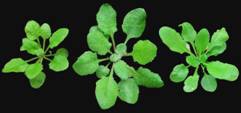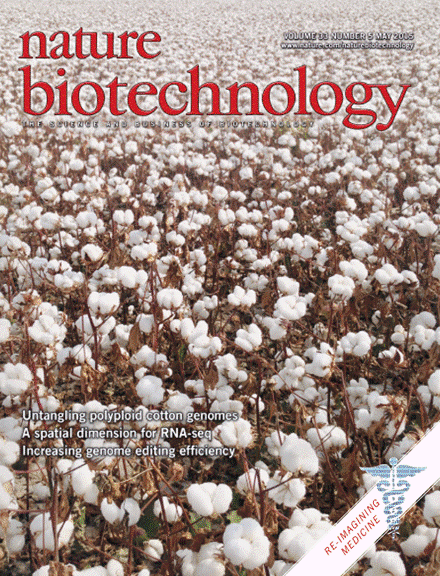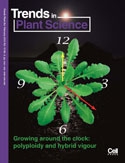
Heterosis or commonly known as hybrid vigor is evolutionarily defined as that the heterozygotes have higher fitness in a population than the homozygotes. In general, heterosis refers to increase in stature, biomass, and fertility of a hybrid that is superior to one or both parents. For example, hybrid plants like maize and polyploid plants like wheat grow larger and more vigorously than their parents. Heterosis is a widespread phenomenon that has intrigued many scientists including Charles Darwin (1876) who systematically characterized growth vigor in cross-pollinated and self-pollinated plants of many species. In 1910’s, heterosis was rediscovered in maize by George H. Shull and Edward M. East. Since the introduction of hybrids in 1920’s, the yield of maize has steadily increased sixfold. Hybrid vigor was also observed in embryo development and reproductive traits in mammals. Although hybrid vigor has been commonly observed and widely utilized in plant and animal production, the mechanisms remain elusive. Two models have been fascinatingly debated over a century. The “dominance” model suggests complementation of slightly deleterious recessive alleles in the hybrids, whereas the “overdominance” model indicates that the genes have greater expression when they are heterozygous. The inability to discern a molecular basis for hybrid vigor is partly because F1 hybrids segregate, making it difficult for molecular tests. A molecular model of heterosis suggests that expression alteration of regulatory genes modulate expression of housekeeping genes and output traits in hybrids and allopolyploids, leading to growth vigor.
We developed the Arabidopsis allotetraploids to study molecular mechanisms of hybrid vigor. The allotetraploids are genetically stable and tractable, which provides an excellent model system for mechanistic studies on polyploidy and hybrid vigor. The effects of genome merger (hybridity) and doubling on growth vigor are testable in diploid hybrids (merger only) and allotetraploids (merger and doubling, “super” hybrids). The dosage may augment the effects of hybridity on gene expression and phenotypes. In a recent study, we found that altering rhythmic amplitudes of circadian regulators increases expression of downstream genes in chlorophyll biosynthesis and starch metabolism in Arabidopsis hybrids and allopolyploids, leading to growth vigor. This finding links circadian rhythms discovered in heliotrope plants (1729) to heterosis that was intrigued by many scientists including Charles Darwin (1876). We are testing how and why genomic mixture in hybrids and allopolyploids induces epigenetic changes in circadian clock gene expression and whether the circadian-mediated growth vigor is a general mechanism for other hybrid plants and crops such as maize and sorghum.
Ten selected papers about heterosis
- Birchler JA, Yao H, Chudalayandi S, Vaiman D, Veitia RA: Heterosis. Plant Cell 22: 2105-12 (2010).
- Chen ZJ: Molecular mechanisms of polyploidy and hybrid vigor. Trends Plant Sci 15: 57-71 (2010).
- Crow JF: 90 years ago: the beginning of hybrid maize. Genetics 148: 923-8 (1998).
- Darwin CR: The Effects of Cross- and Self-fertilization in the Vegetable Kingdom. John Murry, London (1876).
- Duvick DN: Biotechnology in the 1930s: the development of hybrid maize. Nat Rev Genet 2: 69-74 (2001).
- Krieger U, Lippman ZB, Zamir D: The flowering gene SINGLE FLOWER TRUSS drives heterosis for yield in tomato. Nat Genet 42: 459-63 (2010).
- Lippman ZB, Zamir D: Heterosis: revisiting the magic. Trends Genet 23: 60-6 (2007).
- McMullen MD, Kresovich S, Villeda HS, Bradbury P, Li H, Sun Q, Flint-Garcia S, Thornsberry J, Acharya C, Bottoms C, Brown P, Browne C, Eller M, Guill K, Harjes C, Kroon D, Lepak N, Mitchell SE, Peterson B, Pressoir G, Romero S, Oropeza Rosas M, Salvo S, Yates H, Hanson M, Jones E, Smith S, Glaubitz JC, Goodman M, Ware D, Holland JB, Buckler ES: Genetic properties of the maize nested association mapping population. Science 325: 737-40 (2009).
- Ni Z, Kim ED, Ha M, Lackey E, Liu J, Zhang Y, Sun Q, Chen ZJ: Altered circadian rhythms regulate growth vigour in hybrids and allopolyploids. Nature 457: 327-31 (2009).
- Swanson-Wagner RA, Jia Y, DeCook R, Borsuk LA, Nettleton D, Schnable PS: All possible modes of gene action are observed in a global comparison of gene expression in a maize F1 hybrid and its inbred parents. Proc Natl Acad Sci U S A 103: 6805-10 (2006).



